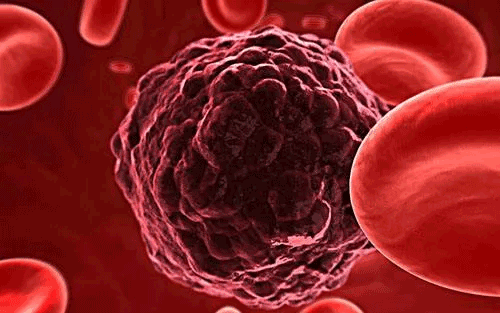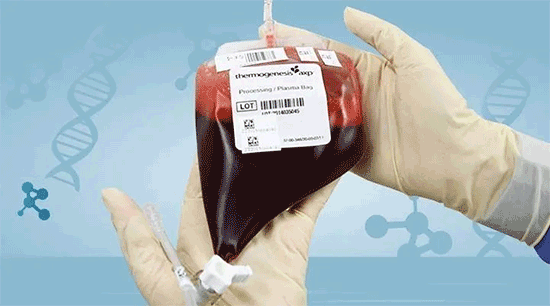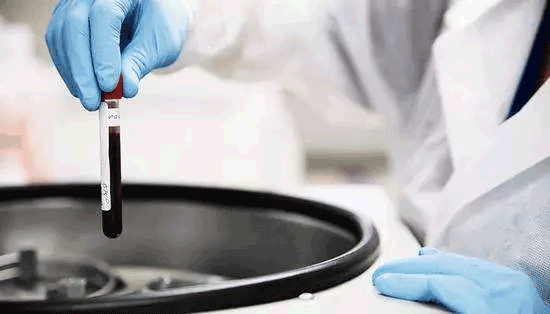Umbilical Cord Blood Reinvents the Miracle of Life! Cord Blood Saved for Son 9 Years Ago Brings 49-Year-Old Mom Back from the Dead
Nowadays, many parents will choose to keep the child's umbilical cord blood when the child is born, in advance for the child's future health and safety to build a strong shield of life protection, and, this “shield” not only to protect the child's health, the family also has such a role.

Recently, a mother in Shandong saved her own life by preserving her child's umbilical cord blood nine years ago.
Ms. Wang (a pseudonym), 49, was diagnosed with acute myeloid leukemia in early 2019 and was treated in the hematology department of a Beijing hospital, where she went into remission after chemotherapy. After considering the risk of recurrent episodes, the attending physician decided to perform a hematopoietic stem cell transplant for Ms. Wang.
After talking with Ms. Wang and learning that she had saved her child's umbilical cord blood in 2010, the attending doctor decided to use the umbilical cord blood in combination with her brother's bone marrow for the transplant.

Umbilical cord blood is the blood that remains in the placenta and umbilical cord after the fetus is delivered and the umbilical cord is tied and disconnected. It is rich in hematopoietic stem cells, and is one of the three major sources of hematopoietic stem cells, which can be used to treat a variety of diseases.
Ms. Wang recalled that she saved her child's umbilical cord blood nine years ago solely for the purpose of leaving her with a health guarantee. It wasn't until her doctor told her that she didn't know that this cord blood stored for her child was a semi-compatible match for her and could be used to cure her leukemia.
On July 11, 2019, the cord blood was resuscitated in a water bath and sent to the transplant warehouse, where it was slowly fed into Ms. Wang, whose child's umbilical cord blood will help her beat the disease. For the child's umbilical cord blood can be used for her own disease treatment, Ms. Wang said, “This umbilical cord of life.”

In recent years, the incidence of leukemia has been rising globally, and there are now millions of leukemia patients in the country, and the number is increasing every year. Hematopoietic stem cell transplantation is one of the effective treatments to eradicate leukemia. Umbilical cord blood is one of the important sources of hematopoietic stem cells.
In addition, cord blood HSCT can be used not only for children but also for adult patients. According to the data of International Center for Blood and Marrow Transplantation (ICHMT), in recent years, the number of umbilical cord blood transplants for patients over 16 years old has been increasing year by year, and the number of such transplants has been close to and exceeded that of patients under 16 years old. Data from the European Cord Blood Transplantation Center also shows that the number of adult cord blood transplants has gradually increased in recent years, and the number of transplants per year since 2008 has exceeded the number of child transplants.

The value of saving cord blood as a countermeasure against the risk of unpredictable diseases in the future should be recognized. Storing umbilical cord blood can provide an additional layer of protection for the health of your child and family, even more practical than monetary protection. Moreover, the autologous use of cord blood by the child is non-rejection, easy to revitalize, less expensive, and the family members have a higher matching chance of 1/2-1/4.
Saving cord blood also has another layer of significance. With the advancement of medical technology, the application prospect of cord blood will be broader, and cord blood may play more roles in more medical fields, such as autism, cerebral palsy, etc. If the financial condition allows, saving cord blood is a good way to protect your child's health. If financial conditions permit, preserving cord blood is a good choice, which is an important reason why many families choose to self-storage cord blood.
What other diseases can cord blood be used to treat?

Umbilical cord blood is rich in hematopoietic stem cells, and as one of the three major sources of hematopoietic stem cells, it can be used to treat diseases such as thalassemia and aplastic anemia. Therefore, many people think that cord blood can only be used to treat hematologic diseases. In fact, besides treating hematologic diseases, cord blood can also treat immune system, genetic metabolic and congenital diseases. Worldwide, cord blood has been applied to more than 80 diseases.
In China, the former Ministry of Health issued the “Cord Blood Hematopoietic Stem Cell Therapy Technical Management Standards (for Trial Implementation)”, which stipulates that the indications for cord blood hematopoietic stem cell therapy include leukemia, myelodysplastic syndromes, malignant lymphoma, multiple myeloma, malignant neoplasm, aplastic anemia with severe aplasia, radiation sickness with severe aplasia, bone marrow failure, hemoglobinopathies, immunodeficiency disease with severe aplasia, metabolic diseases, and so on, and so on, in more than 10 categories. In China, there are more than 10 categories of umbilical cord diseases.
In China, the current technology of regular cord blood banks fully meets international standards. Cord blood will eventually be stored in liquid nitrogen tanks at a deep cryogenic temperature of -196℃ in a dormant state.
As for the storage time of cord blood, theoretically speaking, hematopoietic stem cells can be frozen for a long period of time, there is no limitation on the time, and the long-term frozen storage will not affect the activity and clinical use of stem cells. 2011, a research report published in blood magazine shows that American scientists found that the activity of human umbilical cord blood is still very high after 23.5 years of freezing.
Storing umbilical cord blood for your child not only protects your child, but also your family, which can be said to be a multi-purpose life “insurance”.






